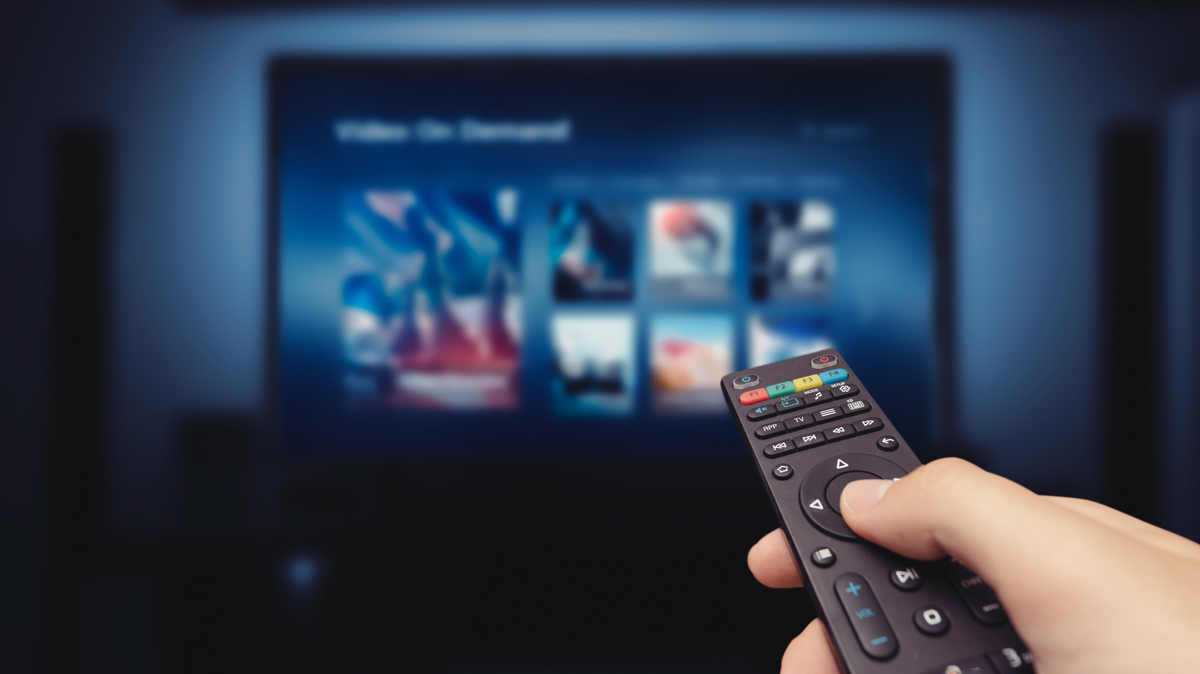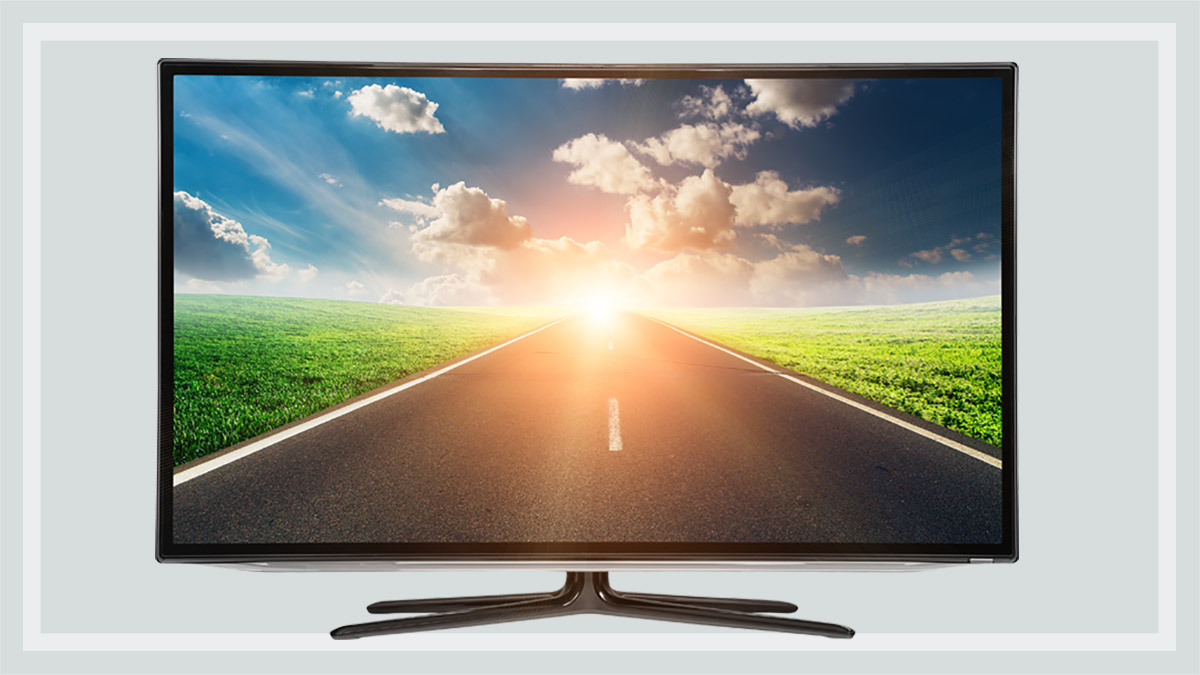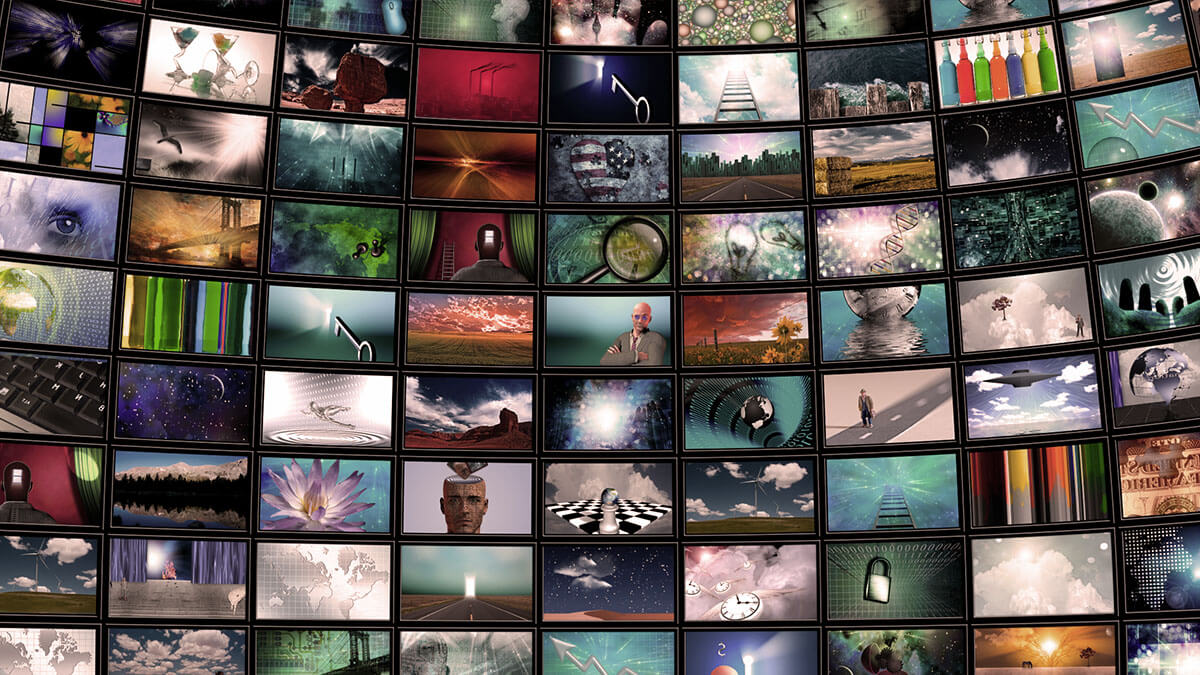Get our independent lab tests, expert reviews and honest advice.
How we test TVs

Almost every home in Australia has at least one TV. In fact, the majority of homes will have two or more. New technology is giving us brighter, more saturated pictures with more detail, and bigger screen sizes. But size isn’t the only consideration when it’s time for us to test TVs.
On this page:
- How we choose what we test
- Our expert testers
- Changes to TV testing
- How we test TVs
- Test criteria explained
- How we test TVs of similar sizes
- Our test lab
How we choose what we test
Availability
From April to October every year, TV makers release many more models than we (or anyone else) can test. We liaise with the manufacturers to get information on what will be released and plan our testing based on that, along with market sales data that provides insights into what sold well in the previous year.
Once the models are officially released we select what we’ll buy based on the popularity of price points and sizes from previous years, as well as what will be promoted in stores.
Sometimes we’ll include a brand that’s outside the mainstream to check that we’re not missing a bargain or something better than the main brands can deliver.
If you’ve got your eye on a TV model that’s not in our test, make sure you read our 10 best tips for choosing a TV instore.
Size
Flat screen TVs enjoyed a surge in popularity in the early 2000s, where the most popular display size was 32 inches (87cm). Within a couple years, that shifted to 42 inches (107cm), and it wasn’t long before the 55-inch (140cm) TV became the new standard size for the average lounge room. Today, 65-inch models are the volume seller and this is our default test size.
We test a number of 55-inch TVs as well, and one or two batches of 42-inch models where available. Occasionally we accept one-off loans for large TVs over 75 inches as we can’t justify spending $15,000 (or more) on one unit, especially when we rely on member funds to conduct our product testing. These TVs are returned to the manufacturer once testing has finished.
Our expert testers
Our technical staff includes some of the most experienced TV testers in the country, with 30 years’ experience testing televisions between them. They’ve seen the progression from bulky cathode ray tube TVs through to the very expensive plasma sets, LCD and now OLEDs and QLEDs.
They’ve also sat on Australian Standards Committees to help make sure the TV you buy is safe, and have had a major influence on getting MEPS (mandatory energy performance standards) implemented, which is why the TVs you can buy today use significantly less energy than the sets of old.
Changes to TV testing
We’re always updating our TV test method to reflect what’s available on the market. A significant change is the introduction of Filmmaker Mode into TVs, a picture mode CHOICE considers to be the first truly useful picture setting.
Filmmaker Mode disables most of your TV’s post-processing tools, such as colour adjustments and motion smoothing. This delivers a more cinematic image that gets as close to the director’s original intentions as possible.
Our viewing panel looks at the same content we assess in our HD and 4K test in the TV’s default mode and Filmmaker Mode. If this isn’t available, we select the closest mode such as ‘Movie’ or ‘Cinema’.
Our technical staff includes some of the most experienced TV testers in the country, with 30 years’ experience testing televisions between them
After looking at the footage, the panel decides if there has been an improvement in the picture compared to the reference TV as far as colour and detail are concerned and score accordingly. This score accounts for 10% of the CHOICE Expert Rating (our overall score) if the feature is available.
Other changes in recent years were prompted by the proliferation of streaming services and 4K ultra-high definition (aka UHD), high-dynamic range (HDR) panels. This is why we test how other resolutions such as SD and HD perform on the latest UHD (4K) TVs.
We’ve also reassessed our reference TV to better reflect consumer assessments on what’s considered an ‘average’ TV. This means there’ll be no changes in the rankings of any of the TVs we’ve tested, only the overall scores of all the TVs.
From SD to HD to 4K (and even 8K)
Australian networks have moved over to HD broadcasting for their primary channels. This move, as well as the increase in high definition (HD) and even 4K content on online subscription services such as Netflix, Stan and Foxtel, has forced an adjustment to the CHOICE TV test weightings to better reflect the type of TV you’re more likely to watch.
We’ve been assessing 4K content for a few years now as we feel 4K has become relevant to more people as content becomes more common on multiple platforms. While it only makes up 5% of our CHOICE Expert Rating, this will increase over time, and together with the Filmmaker Mode score now reflects how well a TV performs when delivering high-quality video content.
Smart functions
There’s been a lot of talk about ‘smart TVs’ and we’ve changed our testing in this area as the TV becomes more of a hub rather than a smart destination in the home.
The latest models continue to offer smart features such as app support and access to streaming services like Netflix, Binge and Disney+.
However, additional support for voice assistance such as asking the TV questions via Google (OK Google) and Amazon (Alexa) has meant the TV is not only smart but also integrated into a smart home. Our testers have found the experience to be less than perfect, but we’ve noticed improvements in the latest models.
How we test TVs
Fundamentally, our testing is a comparison of the relative merits of each television against the others in the test. To this end, we have a colour-calibrated reference TV that we go back to in order to check our scoring is consistent. This way our scoring is based on a direct comparison to a known quality level for each batch.
We want to watch what you watch, not just what will make the television display look good instore
Our tests take around three weeks and are designed to give each TV a fair go at providing a good picture, but our primary focus is to get as close as we can to real-world experiences. We want to watch what you watch, not just what will make the television display look good instore.
Each TV is given time to warm up then tested out of the box, as is, with no adjustment to the picture settings (we’ll turn on HDR for our 4K test if it’s turned off by default).
General data
We gather a lot of information about the TV, including its weight, available screen area, connections (Wi-Fi, Bluetooth etc.) and any other materials supplied with the TV, such as cables. This includes the number of USB2 and USB3 inputs and information about the supported version of HDMI (e.g. 1.4, 2.0, 2.1), which is particularly important for new TVs.
Picture quality
This is one of the major components of our TV test and includes both a technical and subjective assessment of how well the TV can handle a number of different source materials. Brands and models are obscured during this test.
Viewing panel
A panel of three experts assesses SD, HD and 4K HDR content on each TV. The TVs are placed side by side and connected to a sophisticated delivery system that provides them all with the same source material at the same time. This makes it possible for our panel of viewers to go seamlessly from one TV to another. The reference TV is included in the array and the panel uses it as a basis for determining scores.
For each test the panel assesses:
- standard and high definition footage from movies on discs and technical footage to look at noise levels, jaggies and more (we explain more about this below)
- standard and high definition footage from a sports broadcast (including long shots of players on a field moving quickly)
- 4K UHD, which includes footage from a 4K movie with HDR enabled on the TV and the player (Xbox with support for 4K and HDR)
- HD and 4K UHD movie footage in Filmmaker Mode, or the TV’s Movie/Cinema mode if this feature isn’t available.
Our experts are looking for colours that have good saturation and that don’t look false or have a particular overall cast. They assess the sharpness and noise in the picture and look for obvious faults such as plastic-looking skin tones, poor black levels, noise, backlight bleeding and pixilation around moving objects.
We’ve found many TVs with very high resolution panels struggle to upscale SD and even HD sources to their native resolution of 4K or sometimes 8K, which leads to low scores in our testing for SD and HD compared to the higher resolutions. Although many of the TVs deliver better than OK pictures with an HD and 4K source, poor results for SD performance mean their overall score can be reduced.
Technical assessment
We also assess some technical footage, designed to test the TV’s ability to deal with noise in the signal at both high and standard definition.
Objective tests include:
- test patterns and footage, which check each TV for overscan (how much picture is not being shown)
- jaggies (diagonal lines that appear as jagged or broken lines)
- judder and blur at a number of different frame rates.
Ease of use
After picture quality, this is the second-most important part of the test. We cover a lot of the TV’s functionality, but it’s impossible to check everything a smart TV can do, so we check the things you’re most likely to use.
Remote control
If you’ve ever lost your remote control you’ll know how essential it is for using your TV. Some come with two remotes and in this case we test them both, but the score is based on the best one.
- The tester checks the size and spacing of the buttons, dials or touch pads to make sure they’re easy to reach, logically grouped and not too close together.
- Labels should be big enough to read and of sufficient contrast to be easy to read in low light.
- The volume and channel up/down buttons should be prominent.
- The remote should include numeric buttons 0 through 9, a favourite channels button, and a prominent home button.
- The remote’s overall size and shape is assessed for how well it fits in the hand and how easy it is to use with one hand.
On-screen user interface
The on-screen user interface should be easy to read, easy to follow, easy to navigate, tell the user what’s happening and show clear prompts, which button to press, or what to do next. It should also stay on screen long enough for the user to be able to read and understand the various options.
Closed captions, if activated, should remain active after changing the channel. After being powered off for some time, and then turned on, the TV should start up with the last displayed source – if you were last watching broadcast TV, it should start up showing broadcast TV.
The tester assesses the on-screen user interface for the following attributes:
- a simple and well organised means of selecting the main functions or options
- easy to read characters
- intuitive descriptor words, phrases or symbols
- staying on the screen long enough
- having a guide as to which keys to use
- ease of organising frequently viewed channels, either by using the favourites function or channel skip/erase.
The tester assesses the closed captioning feature and whether the closed captions state is retained when changing channels.
Smart functionality
The tester assesses:
- ease of scrolling, entering data and whether it can play Flash video format
- whether it has common apps (YouTube, Netflix etc.) to see if they’re prominently displayed or have to be searched for
- TV catch-up apps (points are lost if they’re not all available)
- the layout of the screens that get you to and from the apps, including how logical and accessible they are
- embedded Chromecast and AirPlay capability
- how long it takes for Netflix, YouTube and ABC iView to start up
- how easy it is to use these same apps using voice commands
- the amount of home screen space taken up by advertising
- whether automatic content recognition can be turned off in the settings
- whether pre-installed apps (bloatware) can be deleted
- whether there is an app for other free ad-supported channels (e.g. Samsung TV Plus).
Sound quality
The tester plays a number of high-quality voice and music recordings on a DVD player connected to the TV and compares it to a reference soundbar. A panel of three listening experts then score the TV at a volume that the triallists feel is sufficient for listening in a normal room, and at the TV’s maximum volume (assuming the latter is louder).
The panel is listening for:
- clear voices
- sufficient high-, mid- and low-frequency responses to provide some drama and presence
- rattles, humming or obvious distortion.
Test criteria explained
The final scores are based on hundreds of individual scores which our testers produce as they work their way through the test method. The CHOICE Expert Rating, our overall score that determines which products we recommend, is made up of:
- high definition (HD) picture quality (25%)
- standard definition (SD) picture quality (15%)
- Filmmaker Mode picture score (10%)
- remote control score (10%)
- smart TV score (10%)
- user interface score (10%)
- 4K/UHD picture quality (5%)
- energy use score (5%)
- EPG score (5%)
- sound quality score (5%).
How we test TVs of similar sizes
The CHOICE lab tests TVs in batches of between 6 and 10 models (depending on the display size), with a four to five-week turnaround from buying the TVs to testing, verifying the data and publishing the results. But with hundreds of new models released at the same time every year, our labs have found it impossible to test every model in every display size.
So, our experts have decided to concentrate on the most popular size (based on sales figures), and provide details on ‘similar’ models where the only difference is the display that may be a few inches smaller or larger.
We have focused on testing 65-inch models in an effort to cover as much of the market as possible in our test labs. Industry sources have also informed us that this size has been the most popular option for most homes and remains so for 2025.
After carrying out pilot testing on multiple size TVs in the same series (for example, 55-, 65- and 75-inch models of the Samsung S85 or LG C series) we feel confident in being able to score models that are a display size above and below the model we’ve tested in the lab. So if we present our findings on a 65-inch TV, we’re confident in suggesting it will deliver identical picture performance in the 55- and 75-inch size.
However, pilot tests on the TVs’ speakers did not yield the same consistent results across the different-sized models. As such, our reporting of these models will not include a sound score. This also means some TVs may have very slightly different CHOICE Expert Ratings.
TVs that we report on using this system are listed as ‘similar models’. This is the same process we have used for our fridge and dishwasher tests, where we are able to give results for models we haven’t directly tested in our labs.
Our test lab
The CHOICE TV lab is a purpose-built testing facility that allows us to directly compare several TVs at a time. It may not look like your lounge room, but its controlled lighting, temperature, humidity and neutral grey walls combine to make it possible to give every TV we test a good chance of delivering its best performance.
We use a state-of-the-art signal delivery system that provides each TV with the same input at the same time. This makes it possible for our testers and viewing panels to directly compare the TVs with each other. It also makes it possible to quickly switch from one input type to another so we can assess the differences between them.
Our surveys of your viewing habits tell us that the majority of people watch TV in subdued LED lighting. Our test lab has dimmable LED lights, so we can replicate this condition as well as see how the TVs look when viewed in brighter conditions.
The lab is also equipped with a high quality Blu-ray player and video recorders along with a moderately priced soundbar. The latter is used as a reference when assessing TV sound quality.
Finally, we have a number of calibrated instruments, which we can use to accurately measure white and black points on the TVs, or make complete colour accuracy assessments when necessary.






